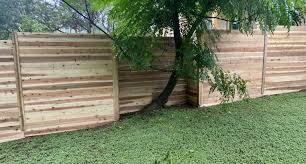UF/IFAS: Know the laws about trees on property lines
Trees can be a beautiful addition to any property, but they can also be a source of conflict between neighbors. Understanding your rights and responsibilities regarding trees on or near property …
This item is available in full to subscribers.
Attention subscribers
To continue reading, you will need to either log in to your subscriber account, below, or purchase a new subscription.
Please log in to continueDon't have an ID?Print subscribersIf you're a print subscriber, but do not yet have an online account, click here to create one. Non-subscribersClick here to see your options for subscribing. Single day passYou also have the option of purchasing 24 hours of access, for $1.00. Click here to purchase a single day pass. |
UF/IFAS: Know the laws about trees on property lines
Trees can be a beautiful addition to any property, but they can also be a source of conflict between neighbors. Understanding your rights and responsibilities regarding trees on or near property lines is essential.
Let’s break down some key legal points:
Removing a healthy tree on the boundary line
If a tree trunk straddles the property line, it’s considered a “boundary tree” and belongs jointly to both property owners. Neither owner can remove the tree without the other’s consent. Doing so could result in liability for:
• Reduction in property value: Trees, especially mature ones, can significantly increase a property’s value. Removing them can have a measurable negative impact on home prices.
• Loss of ornamental value and benefits the tree provides: Shade and cooling, energy savings, privacy and noise reduction, wildlife habitat, and stormwater management.
A Florida court case Elowsky v. Gulf Power Co. awarded damages when a boundary tree providing shade was removed without permission, recognizing the tree’s importance to the property owner’s comfort and enjoyment.
Liability for overhanging branches and encroaching roots
Branches and roots often extend across property lines, leading to potential conflicts. According to Florida law:
• Healthy branches/roots: If they are healthy, the landowner with the tree on their property is not liable for damage. However, the adjoining property owner can trim them back to the property line at their own expense.
• Dead branches/roots: The tree owner could be liable for any damage caused if they are dead.
In Scott v. McCarty, the court upheld that landowners are responsible for trimming encroaching branches or roots, reaffirming this principle.
Responsibility for fallen trees
Who is responsible when a tree falls? It depends on the tree’s health.
• Dead trees: If a dead tree falls and causes damage, the landowner where the tree was located initially is responsible for the damages.
• Live trees: The adjoining property owner is responsible if a live tree falls and causes damage.
However, it’s important to note that Florida case law isn’t entirely settled on this issue, especially regarding hazardous trees that aren’t yet dead.
When assessing damages, courts may consider:
• The tree’s species, size, age and condition
• Its location and function on the property
• Costs to replace the tree (if possible)
• Decrease in overall property value
• Loss of the specific benefits that the tree provided
Be a good neighbor
While these are the legal guidelines, the best approach is often to communicate with your neighbor before taking action. Discuss any concerns about trees near property lines and try to reach a mutually agreeable solution.







